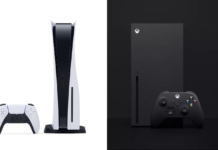The games industry has changed. Over the past few years, there has been an explosion of gaming content across all platforms. Steam, Xbox Live Arcade, PlayStation Network, the eShop, and other digital delivery services have assisted small developers in bringing fresh ideas to the gaming public. Games like the recently released Octodad: Dadliest Catch defy our perceptions of conventional game design and would have struggled to be released only a few years ago. The industry is no longer dominated by mainstream, big-budget blockbusters.
Despite this, the Design, Innovate, Communicate, Entertain summit (D.I.C.E.) took a different approach to their game of the year nominations. Assassin’s Creed 4: Black Flag, Grand Theft Auto 5, BioShock: Infinite, The Last of Us, and The Legend of Zelda: A Link Between Worlds comprised the nominees, with Last of Us taking the award. A strong list, inarguably, but the titles feel a bit stale when grouped together. Link Between Worlds is the only game that doesn’t push for a hard M rating, and Last of Us is the only new IP among them. Most of all, every game is from a well-known, massive developer or publisher. It seems D.I.C.E. believes the big-budget blockbusters still reign.

Let me be clear, I have no issue with the nomination of any one of these games. Each game has mountains of fans and rave reviews, and each are deserving of a game of the year spotlight. One has to admit, though, that they share some striking similarities.
BioShock and Grand Theft Auto both use guns as a primary form of interactivity with the environment, and tend to revel in their violence. Last of Us, despite its presentation as a stealth/action game, spends much of its time brutally depicting violence against its protagonists or villains. Assassin’s Creed has assassin built right into its title and although it boasts a ton of exploration, the primary interactivity with the world remains the same. Killing. Link Between Worlds substitutes real-world aesthetics for cartoon ones, but Link saves Hyrule in the same way he always has. A sword and a shield. On their own, none of these observations are a problem or cause for concern. When you throw these games in a box and label it Game of the Year, though, it paints a limited picture of the gaming industry.

A list of this nature requires a great amount of diversity. Nominating five games for Game of the Year implies that, according to the judges, these are the top five games of that year. When those top five games are all similar in obvious ways, questions have to be asked about our industry. If these are the best we have to offer, what does that mean about our innovative efforts? Are games like Papers, Please, Antichamber, and Gone Home fun experiments worthy of specialized awards or are they worthy of top honors? Several people put Papers, Please in their top games of 2013, myself included. Though it would be difficult to point to a single game in D.I.C.E.’s list that doesn’t belong, the absence of any heavily discussed indie hit feels like an oversight.
We live in a very different gaming world now. We live in a world with Hello Games, a four person team that put together a show-stealing game reveal for the Spike VGX awards. A world with League of Legends, one of the most popular e-sports games that also happens to be download only and free-to-play. A world with Octodad, a game that lets you play as a caring father who also happens to be an octopus. The games industry has changed. I’m just not sure the games industry has realized it yet.










